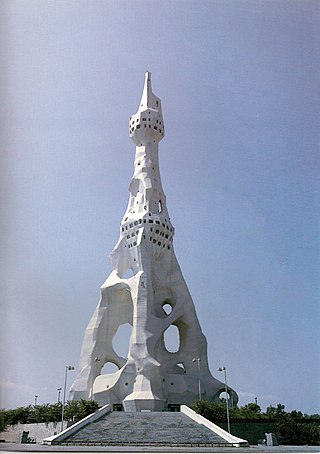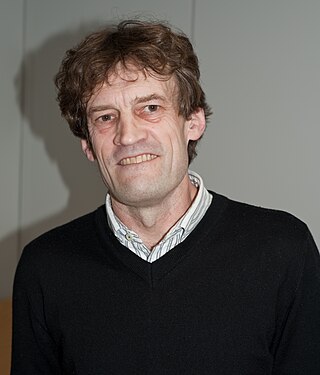
Religion in Japan is manifested primarily in Shinto and in Buddhism, the two main faiths, which Japanese people often practice simultaneously. According to estimates, as many as 80% of the populace follow Shinto rituals to some degree, worshiping ancestors and spirits at domestic altars and public shrines. An almost equally high number is reported as Buddhist. Syncretic combinations of both, known generally as shinbutsu-shūgō, are common; they represented Japan's dominant religion before the rise of State Shinto in the 19th century.

The Kyoto School is the name given to the Japanese philosophical movement centered at Kyoto University that assimilated Western philosophy and religious ideas and used them to reformulate religious and moral insights unique to the East Asian philosophical tradition. However, it is also used to describe postwar scholars who have taught at the same university, been influenced by the foundational thinkers of Kyoto school philosophy, and who have developed distinctive theories of Japanese uniqueness. To disambiguate the term, therefore, thinkers and writers covered by this second sense appear under The Kyoto University Research Centre for the Cultural Sciences.
James Wallace Heisig is a philosopher who specialises in the field of philosophy of religion. He has published a number of books on topics ranging from the notion of God in analytical psychology, the Kyoto School of Philosophy to contemporary inter-religious dialogue. His books, translations, and edited collections, which have appeared in 12 languages, currently number 78 volumes.

Japanese new religions are new religious movements established in Japan. In Japanese, they are called shinshūkyō (新宗教) or shinkō shūkyō (新興宗教). Japanese scholars classify all religious organizations founded since the middle of the 19th century as "new religions"; thus, the term refers to a great diversity and number of organizations. Most came into being in the mid-to-late twentieth century and are influenced by much older traditional religions including Buddhism and Shinto. Foreign influences include Christianity, the Bible and the writings of Nostradamus.

The University of Hawaiʻi Press is a university press that is part of the University of Hawaiʻi.

Heinrich Dumoulin, S.J. was a Jesuit theologian, a widely published author on Zen, and a professor of philosophy and history at Sophia University in Tokyo, where he was Professor Emeritus. He was the founder of its Institute for Oriental Religions, as well as the first Director of the Nanzan Institute for Religion and Culture.
The Nanzan Institute for Religion and Culture is one of the largest centers in the world devoted to scholarly research on the interface of philosophy and religions within the East and West. Founded in 1976 on the campus of Nanzan University, it has established itself in Japan and around the world as a center of academic excellence through its publications, conferences, and team of permanent researchers.
Jan Van Bragt (1928–2007) was a scholar of Japanese religion and philosophy at the Nanzan Institute for Religion and Culture in Nagoya, Japan, where he served as its first acting director in 1976.
Bernhard Scheid is an Austrian historian, academic, and Japanologist, affiliated to the Austrian Academy of Sciences and the Institute of East Asian Studies at the University of Vienna. In addition, Scheid counts among the Austrian top players of the game of Go.

John Lawrence Breen is a British academic and Japanologist. He is a specialist in Japanese history at the International Research Center for Japanese Studies in Kyoto. He writes in English and Japanese on the history of Shinto and the imperial institution.
Fumihiko Sueki is a Japanese academic and historian, and one of Japan's leading scholars of Japanese Buddhism. He is a professor at the International Research Center for Japanese Studies in Kyoto. A member of the advisory board of Nanzan Institute for Religion and Culture's Japanese Journal of Religious Studies, he is also a contributor to the journal itself.

Asian Ethnology is an open access, peer-reviewed journal dedicated to the promotion of research on the peoples and cultures of Asia. It was first published in 1942 at the Catholic University of Peking as Folklore Studies and subsequently at Nanzan University, where from 1963 to 2007 it was known as Asian Folklore Studies.

Audrius Beinorius is a Lithuanian philosopher, orientalist, translator, Habilitated Doctor of Humane Letters.
Girō Senoo was a Japanese Nichiren Buddhist and Marxist. He founded the short lived Shinkō Bukkyō Seinen Dōmei.
The De teaching, whose corporate name is the Church of Virtue, is a sect rooted in Taoism, that was founded in 1945 in Chaozhou, Guangdong. It is popular both in China and amongst expatriate Chinese populations.
Joseph Stephen O’Leary is an Irish Roman Catholic theologian. Born in Cork, 1949, he studied literature and theology at Maynooth College. He also studied at the Gregorian University, Rome (1972-3) and in Paris (1977–79). Ordained for the Diocese of Cork and Ross in 1973, he was a chaplain at University College Cork (1980–81). He taught theology at the University of Notre Dame (1981–82) and Duquesne University (1982–83) before moving to Japan in August, 1983. He worked as a researcher at the Nanzan Institute for Religion and Culture, Nanzan University, Nagoya (1985–86), where he later held the Roche Chair for Interreligious Research (2015–16). He taught in the Faculty of Letters at Sophia University, Tokyo, from 1988 to 2015.
The Northern Song canon (北宋刊経) was a printed collection of Buddhist texts produced in the Northern Song dynasty.
Kamehime was a Japanese woman from the Sengoku period. She was the eldest daughter of Tokugawa Ieyasu with his first wife, Lady Tsukiyama.
This article presents a selected bibliography of Tenrikyo, a Japanese new religion.
Duncan Ryūken Williams is a scholar, writer, and Soto Zen Buddhist priest who is currently professor of religion and East Asian languages and cultures at the University of Southern California. He also serves as the director of the USC Shinso Ito Center for Japanese Religions and Culture. His research focuses on Zen Buddhism, Buddhism in America, and the mixed-race Japanese (hapa) experience.







